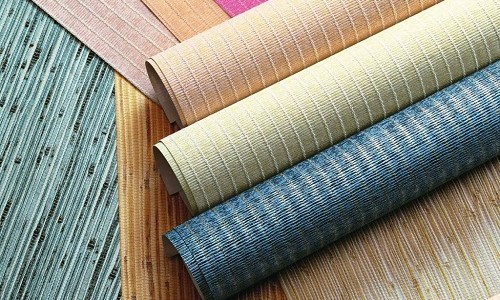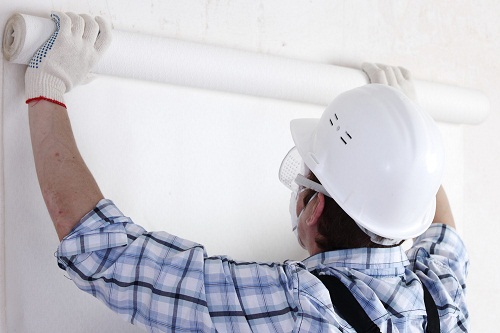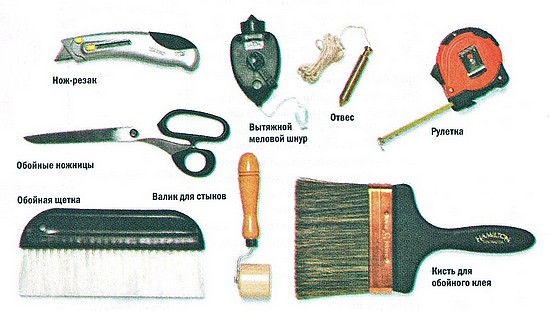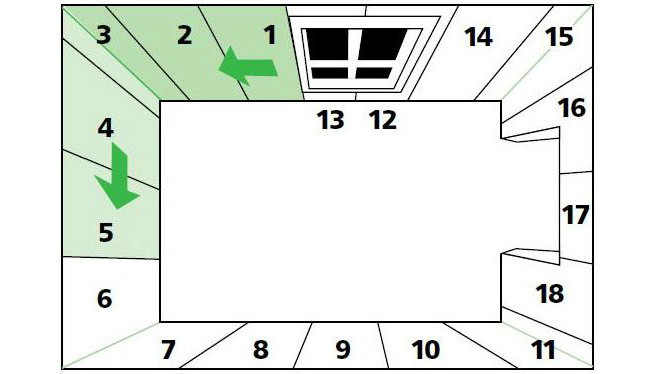When starting a renovation, the question comes to mind:can you glue wallpaper on non-woven wallpaper? If you decide to change something in your home, you should start with updating the walls. First, you need to understand what the technology of pasting walls with wallpaper is and how to properly prepare the walls for further pasting. Non-woven wallpaper is popular due to its variety of colors and ease of gluing. Let's find out the pros and cons of non-woven wallpaper.
Non-woven wallpaper is popular due to its variety of colors and ease of gluing. Let's find out the pros and cons of non-woven wallpaper.
So is it possible to glue the wallpaper over the old ones?
Of course, if you don't waste your time onpeeling off worn-out wallpaper and leveling the walls will be much faster, but unsightly and of poor quality. In addition, after some time, your new wallpaper will start to bubble or, even worse, fall off along with the old. Therefore, answering the question of whether it is possible to glue purchased wallpaper over old ones, a negative answer suggests itself. In addition, the top layer is very easy to remove: after a little effort, only a non-woven base remains, on which other materials can be glued. When renovating premises, pasting is allowed only on a paper web, where there is no obvious convex pattern. Wallpapering can only be done on wallpaperwithout raised patterns. Most often, the idea to glue a new canvas over the old one comes when it is not possible to remove the existing layer from the walls, or simply without sufficient knowledge in this area. In order to correct this situation, it is necessary to make cuts on the old canvas using an ordinary stationery knife, and then wet it generously with warm soapy water. For greater effect, this operation can be carried out several times, after which the old wallpaper is removed much easier. Some craftsmen manage to glue wallpaper without preparing the walls, directly on whitewash, which is also not recommended. First, you need to clean the ceiling or wall from whitewash, go over it with a primer and only then glue it. A similar picture is with pasting wallpaper on painted walls, since wallpaper glue is not absorbed by paint, especially water-based. If you still glue the finishing material over whitewashed or painted surfaces, the work done will soon make you upset: the wallpaper will peel off by itself. But gluing new ones on plasterboard is very good! Since plasterboard is the same paper, only pressed, it has the property of sticking well to similar material. The surface must be leveled and primed before pasting. With the right technology for pasting wallpaper, the walls will look perfect. Return to the table of contents</a>
Wallpapering can only be done on wallpaperwithout raised patterns. Most often, the idea to glue a new canvas over the old one comes when it is not possible to remove the existing layer from the walls, or simply without sufficient knowledge in this area. In order to correct this situation, it is necessary to make cuts on the old canvas using an ordinary stationery knife, and then wet it generously with warm soapy water. For greater effect, this operation can be carried out several times, after which the old wallpaper is removed much easier. Some craftsmen manage to glue wallpaper without preparing the walls, directly on whitewash, which is also not recommended. First, you need to clean the ceiling or wall from whitewash, go over it with a primer and only then glue it. A similar picture is with pasting wallpaper on painted walls, since wallpaper glue is not absorbed by paint, especially water-based. If you still glue the finishing material over whitewashed or painted surfaces, the work done will soon make you upset: the wallpaper will peel off by itself. But gluing new ones on plasterboard is very good! Since plasterboard is the same paper, only pressed, it has the property of sticking well to similar material. The surface must be leveled and primed before pasting. With the right technology for pasting wallpaper, the walls will look perfect. Return to the table of contents</a>
Advantages of non-woven wallpaper
 Wallpaper pasting tools.Today, the decorative finishing materials market offers a lot of options for renovating an apartment or house. When choosing a material for pasting walls, you should take into account the existing disadvantages and advantages of the finishing material. Non-woven wallpaper is made using a rather complex technology based on pressed fabric and paper fibers. It is noteworthy that this material is highly durable, long-lasting, resistant to fire, and also has soundproofing properties. The color palette and variety of textures and relief will allow you to implement any design solutions. All these advantages have become possible thanks to modern technologies, which have significantly increased the service life of finishing materials. Non-woven fabric does not emit harmful substances if it does not have vinyl components. In addition, such wallpaper can be painted with acrylic or dispersion paint if necessary. Often, this opportunity is used by families with small children who like to paint the walls, puzzling their parents. The high cost is the only significant disadvantage of non-woven wallpaper. Return to the table of contents</a>
Wallpaper pasting tools.Today, the decorative finishing materials market offers a lot of options for renovating an apartment or house. When choosing a material for pasting walls, you should take into account the existing disadvantages and advantages of the finishing material. Non-woven wallpaper is made using a rather complex technology based on pressed fabric and paper fibers. It is noteworthy that this material is highly durable, long-lasting, resistant to fire, and also has soundproofing properties. The color palette and variety of textures and relief will allow you to implement any design solutions. All these advantages have become possible thanks to modern technologies, which have significantly increased the service life of finishing materials. Non-woven fabric does not emit harmful substances if it does not have vinyl components. In addition, such wallpaper can be painted with acrylic or dispersion paint if necessary. Often, this opportunity is used by families with small children who like to paint the walls, puzzling their parents. The high cost is the only significant disadvantage of non-woven wallpaper. Return to the table of contents</a>
How to glue the non-woven wallpaper?
 Scheme for gluing wallpaper strips to walls.Sometimes it happens that the purchased non-woven wallpaper has a not very dense vinyl coating, which can lead to the stains of the wall showing through after pasting, if they are present due to its color heterogeneity. Such a result can be obtained, for example, when pasting walls made of plasterboard, on which only the joints of the sheets are plastered. If such a danger exists, then before starting work you should still even out the color of the walls. If you plan to paint the wallpaper later after pasting, then it will be enough to go over it with an appropriate layer of paint to eliminate the showing through. For these wallpapers, it is best to use special or vinyl glue. It must be purchased in strict accordance with the existing instructions for non-woven wallpaper. In almost any store, a sales consultant will help you correctly calculate the required number of packs of glue for pasting your premises. When starting pasting, it is completely unnecessary to coat the back of the material, since for non-woven fabric it is enough to apply special glue to the working surface of the wall. Finishing experts advise to wallpaper the walls starting from the top down from the corner or from the window of the room. To level and remove excess glue from the wall under the non-woven fabric, a special wallpaper spatula or roller is usually used. Everything you need for wallpapering can be easily purchased at any hardware store. In the corners, the wallpaper should be properly glued with an overlap, and on the walls - end-to-end. It should be remembered that if you decide to renovate your home and update the walls by gluing wallpaper, you can only start working indoors. Otherwise, if there are drafts, your work will go to waste, since the canvas will soon come off the walls. You can ventilate the room only after the wallpaper has completely dried. Summer is best for finishing work.
Scheme for gluing wallpaper strips to walls.Sometimes it happens that the purchased non-woven wallpaper has a not very dense vinyl coating, which can lead to the stains of the wall showing through after pasting, if they are present due to its color heterogeneity. Such a result can be obtained, for example, when pasting walls made of plasterboard, on which only the joints of the sheets are plastered. If such a danger exists, then before starting work you should still even out the color of the walls. If you plan to paint the wallpaper later after pasting, then it will be enough to go over it with an appropriate layer of paint to eliminate the showing through. For these wallpapers, it is best to use special or vinyl glue. It must be purchased in strict accordance with the existing instructions for non-woven wallpaper. In almost any store, a sales consultant will help you correctly calculate the required number of packs of glue for pasting your premises. When starting pasting, it is completely unnecessary to coat the back of the material, since for non-woven fabric it is enough to apply special glue to the working surface of the wall. Finishing experts advise to wallpaper the walls starting from the top down from the corner or from the window of the room. To level and remove excess glue from the wall under the non-woven fabric, a special wallpaper spatula or roller is usually used. Everything you need for wallpapering can be easily purchased at any hardware store. In the corners, the wallpaper should be properly glued with an overlap, and on the walls - end-to-end. It should be remembered that if you decide to renovate your home and update the walls by gluing wallpaper, you can only start working indoors. Otherwise, if there are drafts, your work will go to waste, since the canvas will soon come off the walls. You can ventilate the room only after the wallpaper has completely dried. Summer is best for finishing work.


